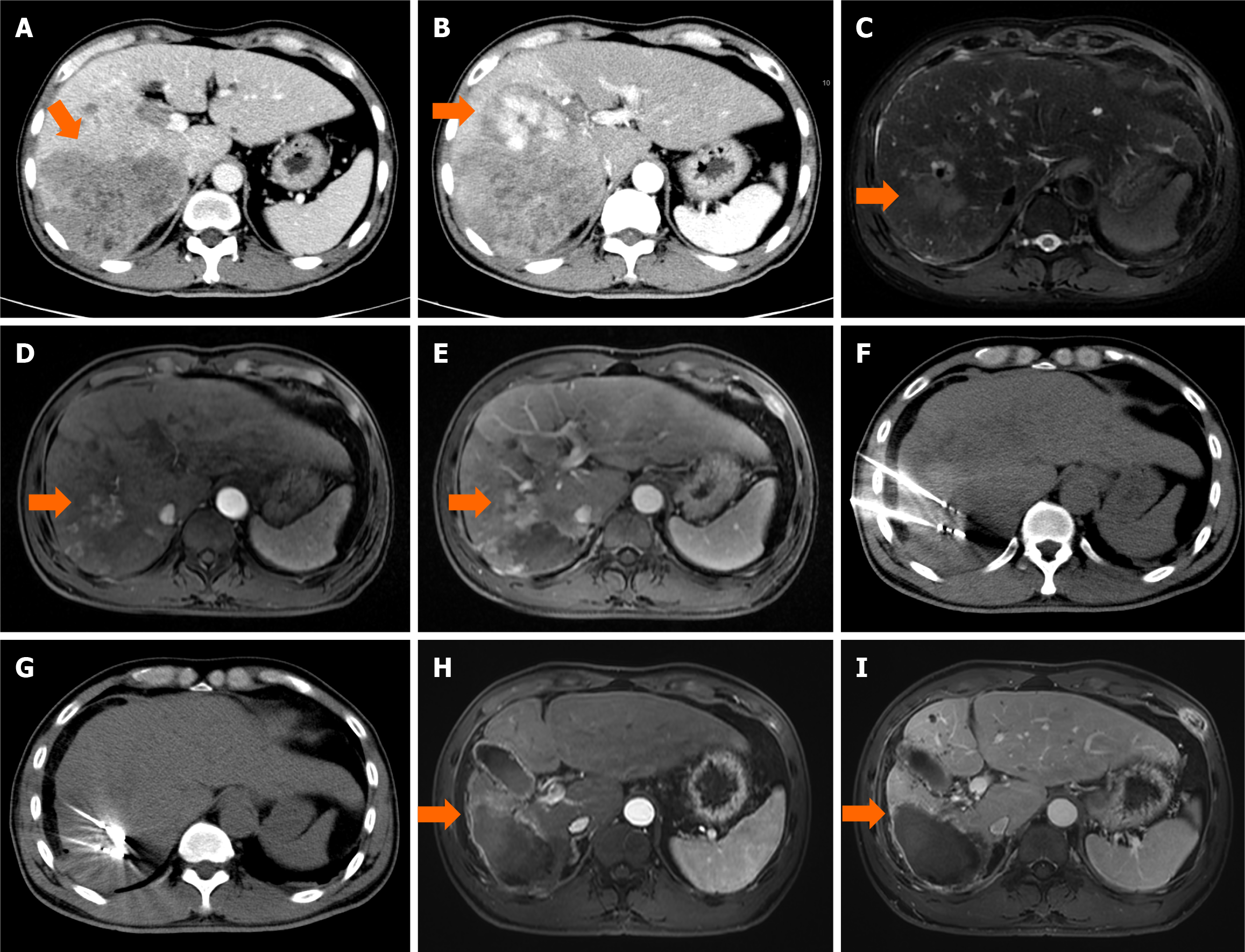Copyright
©The Author(s) 2024.
World J Gastrointest Oncol. Aug 15, 2024; 16(8): 3481-3495
Published online Aug 15, 2024. doi: 10.4251/wjgo.v16.i8.3481
Published online Aug 15, 2024. doi: 10.4251/wjgo.v16.i8.3481
Figure 3 An example of follow-up medical record of camrelizumab plus apatinib and hepatic artery infusion chemotherapy combined with microwave ablation treatment in patients with advanced hepatocellular carcinoma.
A 54-year-old male patient with hepatocellular carcinoma (arrow) were examined [the maximum diameter, 8.7 cm; alpha-fetoprotein (AFP), 1765 ng/mL] by contrast enhanced computed tomography scanning on September 2020. A and B: The tumor was diffusely distributed (arrow) and the right main branch of portal vein showed filling defect (arterial phase and portal phase); C-E: After four-cycle camrelizumab plus apatinib and hepatic artery infusion chemotherapy, the tumor (arrow) has shrunk significantly, but the tumor periphery remained active (arrow) and showed enhanced activity [T2-weighted imaging (T2WI), T1WI arterial phase and portal phase]; F and G: The residual lesions were ablated by two microwave antennas at the same time. The ablation power was 60 W and the ablation time was 10 minutes; H and I: Six months after microwave ablation, magnetic resonance imaging (T1WI arterial phase and portal phase) showed that the tumor activity had completely disappeared (arrow) and the tumor markers had returned to normal.
- Citation: Zuo MX, An C, Cao YZ, Pan JY, Xie LP, Yang XJ, Li W, Wu PH. Camrelizumab, apatinib and hepatic artery infusion chemotherapy combined with microwave ablation for advanced hepatocellular carcinoma. World J Gastrointest Oncol 2024; 16(8): 3481-3495
- URL: https://www.wjgnet.com/1948-5204/full/v16/i8/3481.htm
- DOI: https://dx.doi.org/10.4251/wjgo.v16.i8.3481









